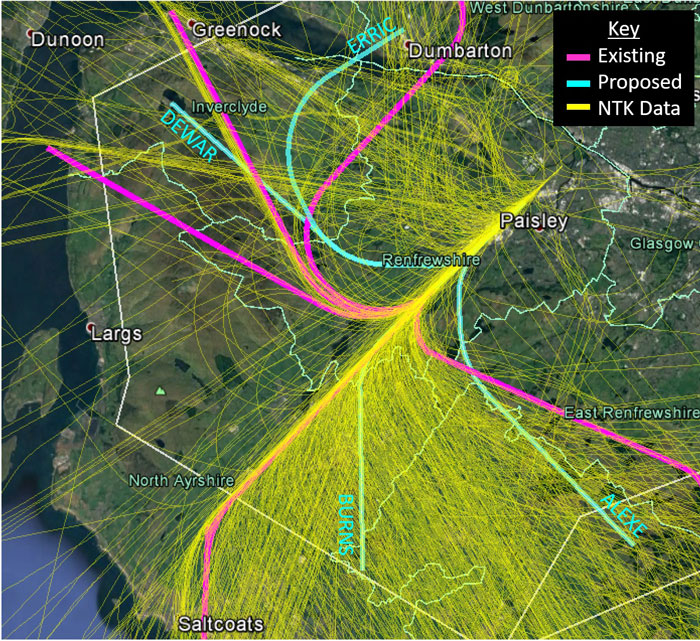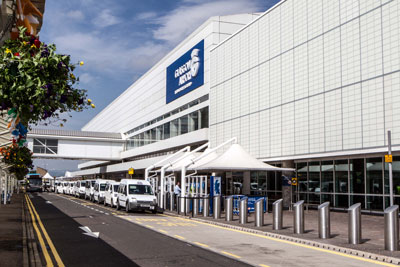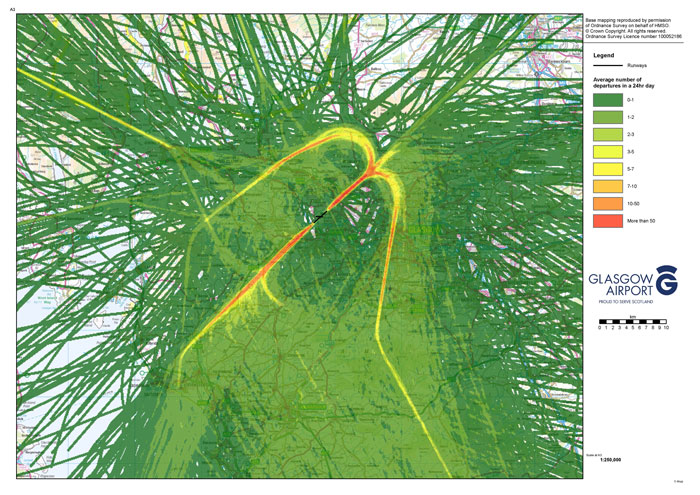“It is important to stress we will only make changes to the approach or departure flight paths once we have considered the views of all those who respond to the airspace change consultation. We will host a number of drop-in sessions over the course of the coming months and all views will then be presented to our regulator, the CAA, before the necessary approval can be granted.”
Mark Johnston added: “We are fully committed to growing the airport responsibly and modernising our airspace will help us achieve that. It is important that our communities and stakeholders are fully involved in this modernisation process and we would encourage people to participate.”


Image showing departure off the west runway. 78 per cent of all of Glasgow Airport’s departures take off westbound on what it calls runway 23
Further information on the airspace consultation, including how to respond, can be found here.
The airport is also required to publish an updated noise action plan every five years and will be undertaking a parallel 13-week consultation on a draft plan. The noise action plan sets out proposed measures to manage and mitigate the impact of aviation-related noise.
Information on the Noise Action Plan can be found here. The deadline for submissions for both consultations is 13 April 2018



















